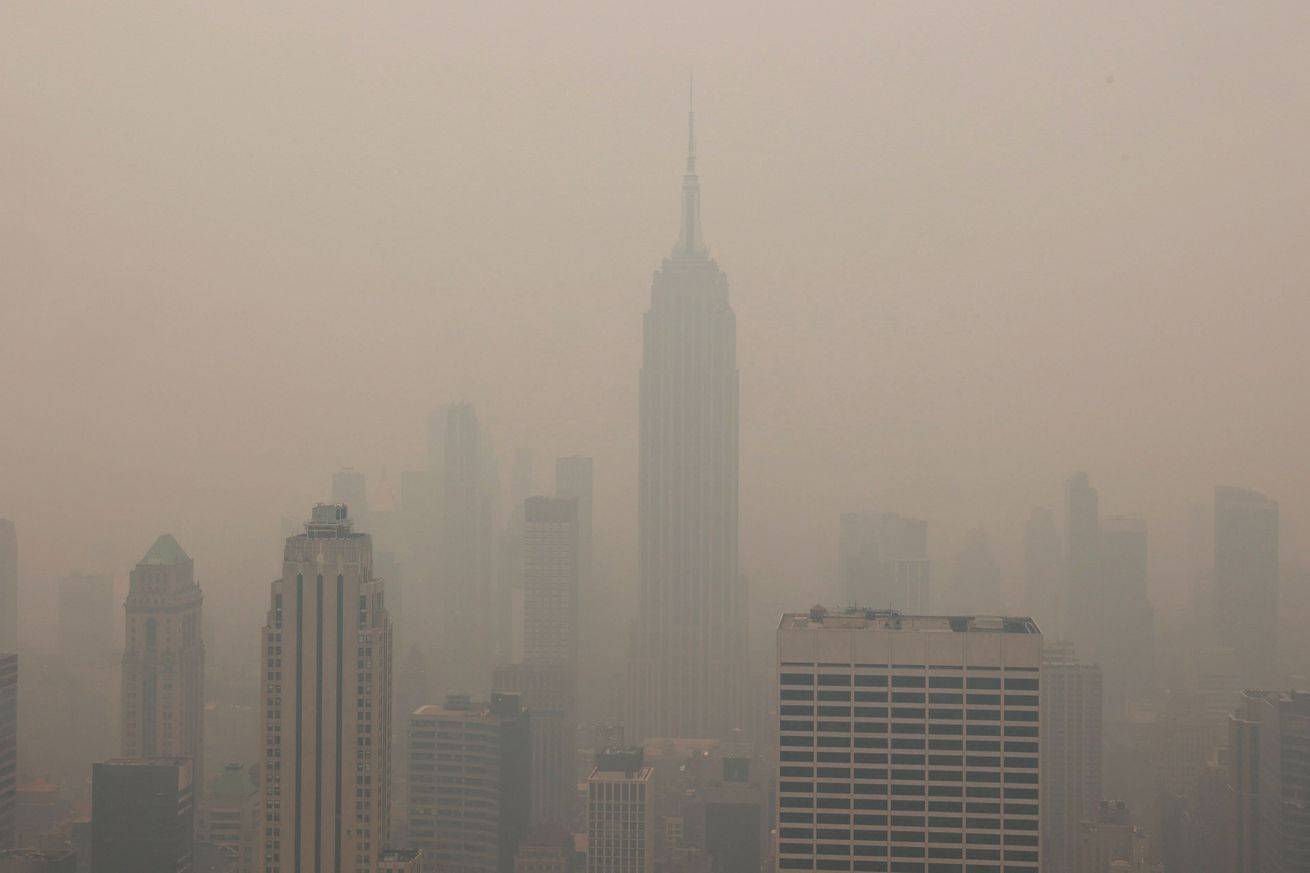
Wildfire smoke slashed solar power generation
Wildfire smoke curtailed solar power generation when it clouded skies across the US last week. It’s one more example of how climate change is putting more pressure on stressed-out power grids.
Billows of smoke from hundreds of blazes in Canada wafted over huge swaths of the East Coast and Midwest, where it created a record-shattering air quality disaster last week. Hazy skies also made it harder for solar panels to soak up sunlight, leading to big losses in clean energy generation.
It’s one more example of how climate change is putting more pressure on stressed-out power grids
Solar farms in New England produced about 60 percent less electricity at 1PM last Wednesday than they did at the same time the week prior, according to data from the region’s grid operator, ISO New England. Mid-Atlantic and Midwestern states, meanwhile, saw solar power generation slashed by as much as 25 percent last week, Bloomberg reported.
New York, one of the states hardest hit by the smoke, lost 1,466 megawatts (MW) in solar energy production between June 6th and June 7th. For a sense of scale, a single megawatt is roughly enough electricity to power 800 to 1,000 homes.
Fortunately, there was a silver lining that prevented these losses from having a bigger impact. The smoke lowered temperatures in the Northeast and Midwest somewhat. Since people didn’t have to crank up their air conditioning as much, it helped take some pressure off the grid (even though the change made forecasting electricity demand more difficult). And solar energy still only makes up a small slice of the energy mix in the US, accounting for 3.4 percent of electricity generated.
Those factors might not work in favor of Americans in the future. Heatwaves and wildfires are becoming more intense with climate change. And the US needs more clean energy, including solar farms, to stop global warming from becoming much worse. The Biden administration has a goal of sourcing all of the nation’s electricity from carbon pollution-free sources like solar by 2035.
We’re already seeing worrying patterns when it comes to climate disasters like wildfires messing with our energy infrastructure. Wildfire risk has pushed utilities to preemptively cut off electricity to customers to avoid sparking a blaze with their power lines. And in September 2020, historically bad wildfires cut solar power generation by 30 percent in California, which gets a lot more of its electricity (about 14 percent) from solar. That was also a record year for blackouts in the US, mostly because of extreme weather events and fires.

